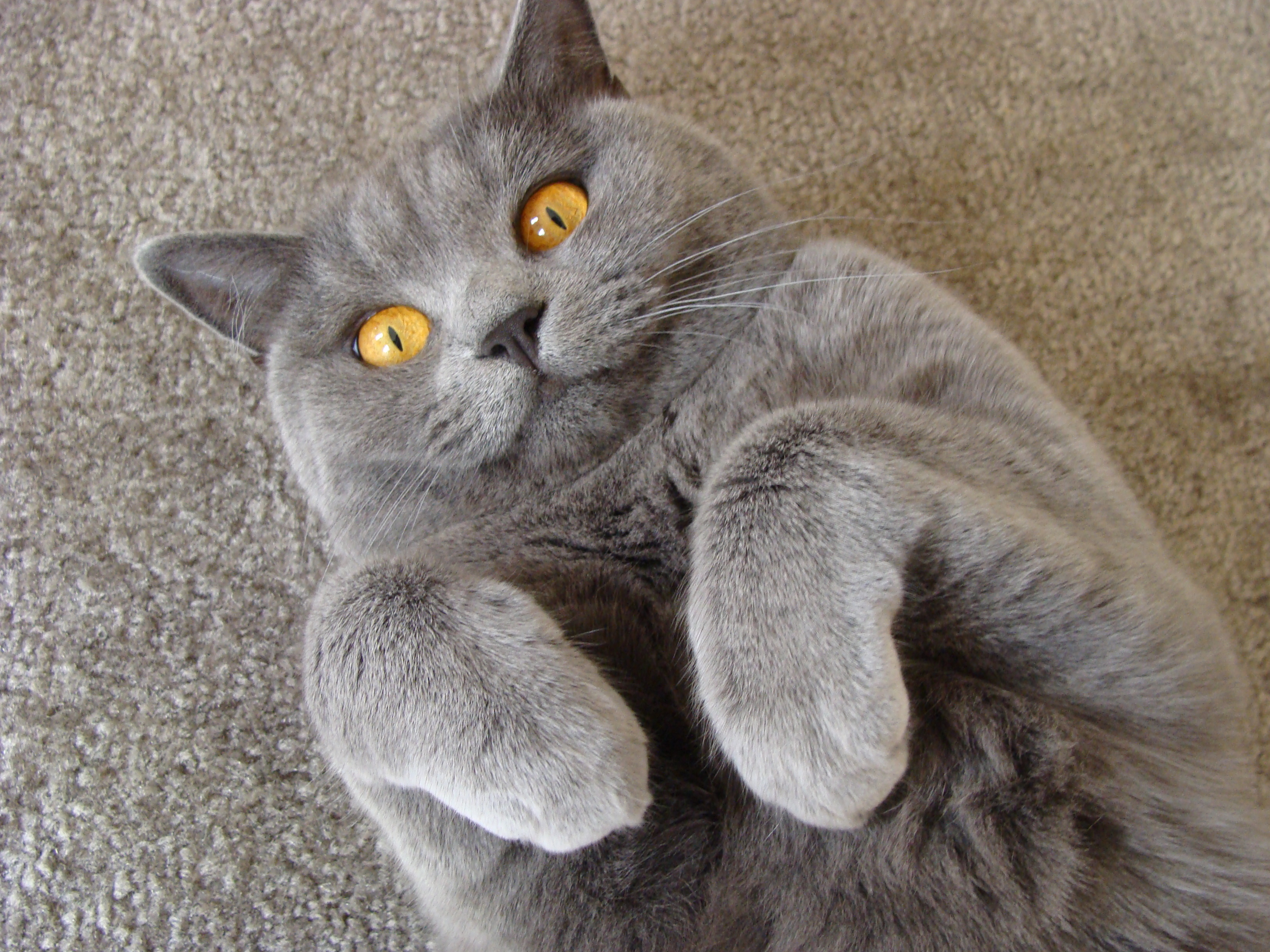
Much like the Ragdoll or the Ragamuffin, the British Shorthair is in no rush to grow up. Some claim that every British Shorthair today can be linked genetically back to this little champion. Shortly after in 1874, a British Shorthair named Brynbuboo Little Monarch won the Grand Championship of the Governing Council of the Cat Fancy. But due to dedicated breeding, the British Shorthair was successfully re-established in 1870. In the mid-19th century, the breed almost disappeared due to the popularity of other cats, notably the Persian and other long-haired breeds. They were originally bred to be working cats and mousers. We can trace the lineage of the British Shorthair back to ancient Rome. The British Shorthair has a gorgeous coat that is thick and dense, becoming longer and thicker during the winter months. It’s a well-developed breed, with a broad chest and powerful muscles. The British Shorthair is a medium-to-large-sized cat. The British Shorthair makes a great companion for individuals and families with children. Often described as being “teddy bear-like”, this breed is affectionate, good-natured and fiercely loyal, as well as playful and curious. The British Shorthair is one of the oldest cat breeds. Like all cats, British Shorthairs are independent by nature, but this breed is particularly well-known for being kind, loyal and loving. In this post, we are excited to delve into the popular and adored British Shorthair.īritish Shorthairs are one of the most popular breeds due to their kind nature, even-tempered personalities and for the strong bonds they often form with owners.
#Tabby british shorthair how to
We discuss what makes them special, their particular requirements and how to properly care for your cat. Blue remains the most prevalent - and the most popular - British Shorthair cat color.With our “A Beginner’s Guide” series, we get to set aside time to explore popular cat breeds. These days, the British Shorthair cat is available in nearly every color and pattern imaginable.

All cat associations now recognize the breed. The British Blue was recognized by the American Cat Association in 1967.īy 1980, the British Shorthair had gained recognition from The International Cat Association and the Cat Fanciers Association. Shorthaired offspring were also bred with Russian Blue cats and French Chartreux cats in an effort to emphasize desirable blue-grey coloring. In an effort to save Britain's favorite cat, British Shorthair breeders introduced Persians to their bloodlines, ultimately creating British Longhair cats. Incredibly, the British Shorthair cat nearly became extinct during the first world war and along with many other breeds, was nearly wiped out again by the end of the second world war. The newly standardized British Shorthair took pride of place at the first cat show in history, which was held at the Crystal Palace in London in 1871. During the 19th century, he – and perhaps other breeders – began selecting for the blue-gray variant that ultimately became the British Blue. Contemporary British Shorthairs retain the appearance of their ancestors, which were large and robust, with dense, short coats that provided protection from the elements.Ĭat fancier and artist Harrison Weir is credited with helping to develop the breed as we know it today. The Romans' cats bred with local wildcats and as time passed, the offspring developed a distinctive look. These early domesticated cats were tasked with the important job of keeping Roman camps clear of mice and other pests. when the Romans invaded Britain, they brought cats with them. This ancient breed is believed to date back to the first century A.D. The history of the British Shorthair cat is a fascinating one.

These traits don’t add up to a mean or antisocial personality instead, they’re an indicator that the British Shorthair may not be ideal for families with young children who aren't yet able to understand boundaries. British Shorthair cats make excellent pets for most households, but they don't tolerate disrespect, and they don't like to be held or carried. They prefer to lounge next to you rather than occupying your lap, and they aren't terribly demanding or overly vocal.

These cats love their families and enjoy staying close, but they aren't big on cuddling. In a nutshell, British Shorthair cats are pedigreed versions of British domestic shorthair cats that have been selectively bred over time to create a distinctive appearance and predictable personality traits. Once known as the British Blue and exclusively bred for blue-gray coloring, the British Shorthair cat now comes in a multitude of colors, but it retains its typical rounded profile and it's delightful – yet somewhat reserved – personality.


 0 kommentar(er)
0 kommentar(er)
